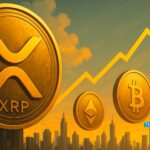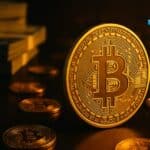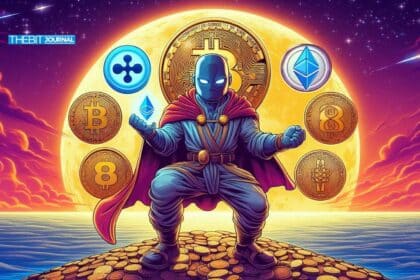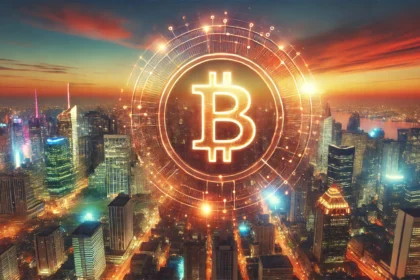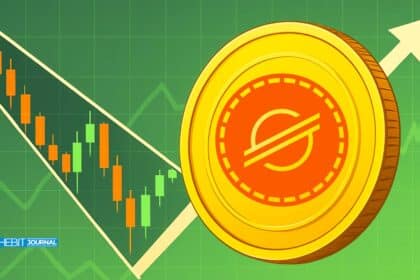Uniswap is a top decentralized exchange (DEX) on Ethereum, launched in 2018 with its governance token (UNI) airdropped in Sept. 2020. UNI holders vote on Uniswap’s DAO and protocol decisions. Uniswap introduced automated market maker (AMM) pools, eliminating order books in favor of liquidity pools managed by smart contracts. In 2021 Uniswap did over $1 trillion in volume, making it the largest DEX by volume.
UNI is the ERC-20 token that grants voting rights on upgrades and treasury spending. At launch, UNI supply was 1 billion, vested to users, developers and investors, with a 2% annual inflation introduced in Sept 2024 to reward active participation. Today, the Uniswap DAO has ~310,000 members managing ~$1.6 billion in treasury. Uniswap’s all-time high was $45.02 in May 2021, as at the time of this writing, UNI stands at $6.01. We explore the UNI price predictions for 2025 and 2026 below.
Recent Uniswap Protocol Updates and Ecosystem News
The Uniswap ecosystem is moving fast. Uniswap v4 launched in January 2025 with new “hooks” to enable custom on-chain logic in pools. And Unichain, a new Layer-2 chain built on Optimism’s OP Stack, is live (initial tests showed millions of transactions).
In February 2025, Uniswap Labs launched Unichain, a new Layer-2 on the OP Stack to optimize DeFi trading . Unichain is “the home for liquidity across chains”, cheaper and faster trades. Uniswap Labs will also earn 20% of Unichain’s fees, which will fund growth. Data shows Unichain is already the dominant chain for Uniswap v4 trading, surpassing Ethereum’s share.
Also in March 2025, the Uniswap DAO approved two big proposals (called “Uniswap Unleashed”) to fund Unichain and v4 development. These include new grants ($95.4m) and liquidity incentives ($45m) to grow the ecosystem.
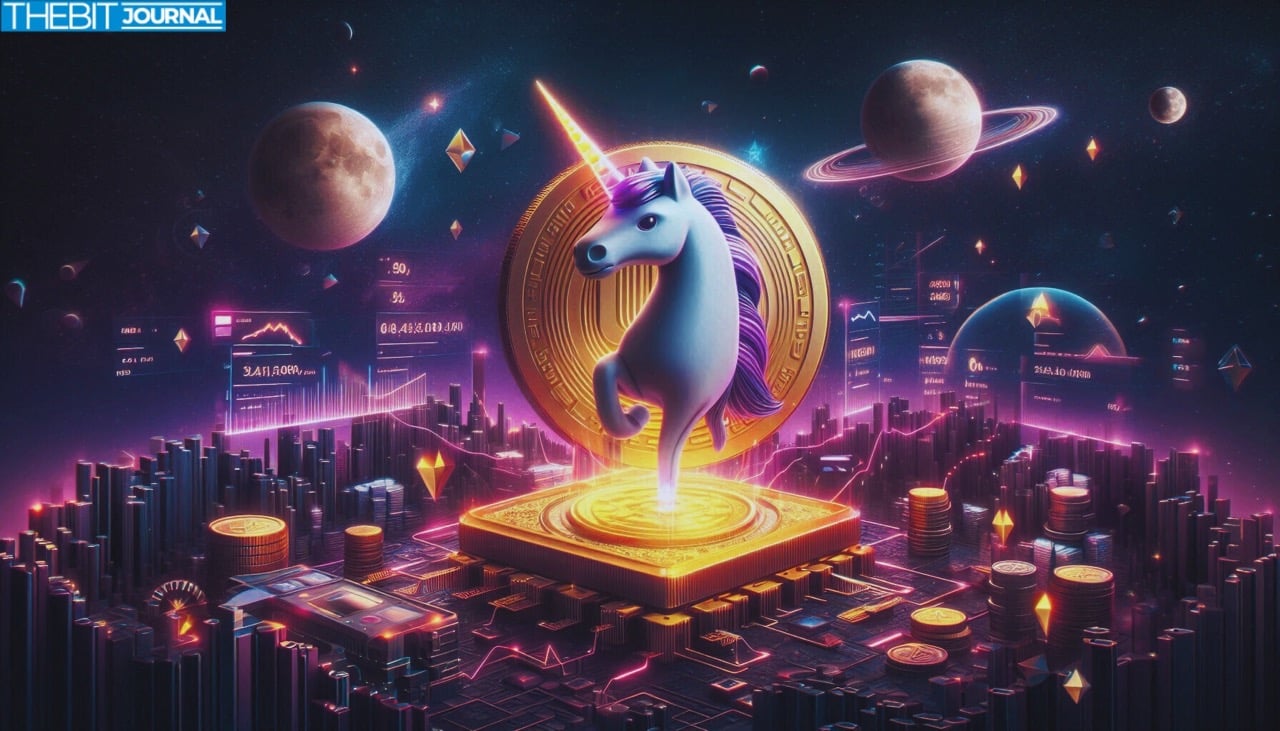
Crucially , the proposals also moved forward the long-awaited fee switch which would redirect a portion of trading fees (over $1b/year) from LPs to UNI holders. If activated, (pending legal structuring) the fee switch would greatly increase UNI’s utility as a revenue-bearing token.
In governance, Uniswap’s on-chain voting is very active: the DAO passed a perpetual 2% inflation (from Sept 2024) to ensure continued staking and voting. Overall, Uniswap’s roadmap is unfolding with big protocol upgrades and incentives that could support UNI demand.
Other recent product updates include a 7702 smart wallet to enable one-click swaps, following the Ethereum Pectra update (EIP-7702). These UX improvements are to attract more users and volume. On the governance side the Uniswap DAO is debating how to use its multi-billion dollar treasury.
A Treasury Working Group was formed in 2024 “to address the volatility and underutilization” of the treasury and propose sustainable deployment strategies. Proposals like activating a fee switch (redirecting trading fees to UNI holders) have been floated. Such governance decisions will impact token value in the coming years.
Overall, Uniswap’s roadmap is unfolding with big protocol upgrades and incentives that could support UNI.
UNI Tokenomics and Treasury
| Metric | Value | Notes |
|---|---|---|
| Initial Supply | 1 billion UNI | Released in 2020 |
| Inflation Rate | 2% annually | Began in Sept 2024 |
| Treasury Value | ~$1.6 billion | Governed by the DAO (~310K members) |
| Circulating Supply (Est.) | Increasing yearly | Due to inflation and vesting |
| Fee Switch Potential | $1B+ in protocol revenue | If shared with UNI holders |
UNI Market Stats
UNI is trading around $6 at press time, 20% up from a month ago. The recent rally has taken cumulative trading volume on Uniswap past $3 trillion, DeFi dominance. UNI is still 84% off its all-time high from 2021.
A whale accumulation last week caused a 38% surge but large sell-offs capped gains and sent the price down 5-6%. Institutional moves have added to the volatility: 2 whale addresses reportedly deposited 11.65 million UNI ($82M) into Coinbase this month and on-chain netflows from whales jumped 492% in late April.
Recent charts are looking good. UNI has been making higher highs and higher lows, a bullish trend. Big green candlesticks in mid-May are showing strong buying. Short-term indicators are mixed, e.g. RSI cooled off from overbought, but as long as UNI holds above $6.50-7.00 the trend is intact. Daily volume is above $3.0 billion, Uniswap has approximately 23% share of all DEX trading. TVL is around $5 billion, half of Uniswap’s 2021 peak.

UNI Price Prediction 2025: Base Case (Most Likely Scenario): $8 – $10
With Uniswap v4 gaining traction, Unichain (L2) accelerating cross-chain liquidity and the fee switch nearing, 2025 could be the year UNI starts to reflect protocol fundamentals. If Uniswap’s $1B+ in annual trading fees starts to be shared with token holders, UNI’s value proposition will shift from governance-only to yield-bearing, a big driver of demand.
And with a treasury of over $1.6B, the DAO has the firepower to fund growth. The approved $140M in new grants and liquidity incentives, if deployed well, will fuel usage and protocol TVL. However, macroeconomic volatility and whale dumps are still risk factors.
UNI Price Prediction 2026: Base Case (Moderately Bullish): $10 – $13
By 2026, if Uniswap v4 pools dominate the DEX space and Unichain is the go-to L2 for permissionless trading, UNI could go up. The market will start to price in the real-world utility and revenue of holding UNI, especially if governance votes lead to an ongoing share of trading fees.
Assuming Ethereum 2.0 continues to scale and DeFi enters a new growth cycle, Uniswap’s position as the leading AMM will be hard to argue with. The DAO’s maturing treasury strategy, including buybacks or yield distribution models, will also support price.
But UNI’s 2% annual inflation could gradually dilute holders, so income or staking opportunities need to grow to offset that.
2025–2026 Price Projection Table
| Year | Min (USD) | Avg (USD) | Max (USD) |
| 2025 | $4.00 | $8.00 | $12.00 |
| 2026 | $5.00 | $10.00 | $15.00 |

Expert Price Predictions (2025–2026)
Analysts are all over the place on UNI. Some are bearish:
CoinCodex: expects a mid-2025 pullback to $4.90. CoinCodex’s long-term model (May 2025) is much more conservative: it expects UNI to average ~$3.01 in 2025 and ~$2.75 in 2026.
DigitalCoinPrice: says UNI will go above its old highs, averaging $11.8–$13.8 in 2025.
WalletInvestor: expects UNI to reach $9.19 by end-2025.
CoinStats/CoinPedia roundup: has a big 2025 range: low is $3.78, high is $15.10 (avg ~$9.44). It also expects 2026 to be $6.05–$24.16 (avg ~$15.10).
UNI Price Factors
UNI’s value is influenced by:
DeFi and Ethereum: As an Ethereum DEX, Uniswap’s value rises with DeFi usage. More Ethereum network activity (more token swaps, NFT trading, etc.) means more trade volume and fee revenue for Uniswap, which in turn supports UNI demand.
Liquidity and Trading Volume: Uniswap’s core value is its deep liquidity pools. More capital locked in pools (higher TVL) and more trading activity strengthens the protocol. More liquidity means less slippage and attracts more traders which in turn can increase fees (and potentially UNI’s appeal).
Protocol Upgrades: Technical improvements drive interest. Upgrades like V3 (concentrated liquidity) or V4 (hooks) improve capital efficiency. Unichain L2 (higher throughput, lower gas) can attract more trading. Successful upgrades build confidence and usage which may lift UNI’s price.
Governance and Fee Switch: UNI’s utility as a governance token is key. Key votes – for example on the “fee switch” – directly impact token value. If Uniswap starts diverting a portion of its (currently ~$1B+ annual) trading fees to UNI holders, that would give UNI holders a revenue share, likely to increase demand. Inflation matters too: the DAO’s 2% yearly token inflation (started 2024) slightly dilutes supply each year so net rewards (like fee income) are needed to offset dilution.
Market Competition: Uniswap is still the DEX leader but competitors (e.g. SushiSwap, Curve, PancakeSwap) exist. Aggressive features or lower fees on other platforms can drain liquidity. Partnerships (e.g. with Aave, Chainlink or bundling NFT via Genie) can expand Uniswap’s reach.
Regulatory Risk: DeFi is evolving. Tightening rules or enforcement (e.g. new requirements for DEXs) can hinder Uniswap’s usage or require compliance changes. Global regulatory scrutiny is a constant variable that can impact investor sentiment.
Conclusion
UNI’s outlook for 2025–2026 is cautiously positive. Current situation, solid market position and new upgrades (v4, Unichain), is positive. But broader market volatility and mixed signals temper short term expectations. UNI could dip to $4–$5 in a downturn or rally to $10–$15 in a DeFi bull run. Ultimately, UNI’s path will depend on DeFi growth, Ethereum’s trajectory and how well Uniswap’s governance changes (fee-switch) work out. Investors should consider both the upside and the unknowns when thinking about UNI.
In summary, positives are strong Ethereum growth, DeFi adoption and v4/Unichain. Negatives are competition, macro crypto sentiment and any regulatory clampdown on DEXs.
FAQs
What is Uniswap and UNI?
Uniswap is a decentralized exchange (DEX) protocol on Ethereum that lets you swap tokens directly via smart contracts. UNI is the governance token. UNI holders vote on protocol changes, treasury spending and initiatives. When Uniswap launched in 2018 UNI tokens were airdropped to early users to share ownership.
What is Uniswap v4 and Unichain?
Uniswap v4 is the latest protocol version (released Jan 2025) that introduces customizable “hooks” for liquidity pools, so you can have better fee control. Unichain is Uniswap Labs’ own Layer-2 network (launched 2024–25 on Optimism tech) to scale the protocol with faster, cheaper transactions. Both are part of Uniswap’s roadmap to improve user experience.
How is the UNI token used?
UNI is primarily a governance and incentive token. It allows you to vote on Uniswap’s future (protocol upgrades, spending grants etc. via the DAO). UNI was also distributed as rewards to early users.
What is the “fee switch” and how does it affect UNI?
The fee switch is a governance mechanism to divert some of Uniswap’s trading fees (currently paid to liquidity providers) to UNI token holders instead. If implemented it would mean UNI holders collectively earn a portion of protocol revenue.
This would increase UNI’s utility and could raise its price as holders receive ongoing income. As of mid 2025, the steps towards a fee switch (and establishing a legal entity for Uniswap Governance) were approved but the switch itself is not yet active.
What affects UNI’s price?
UNI price is affected by overall crypto market trends (especially Ethereum/DeFi), Uniswap usage (liquidity and trade volume) and ecosystem news. Main factors are: Ethereum health (more usage = more DEX volume), protocol upgrades (boosts confidence), DAO actions (fee-share proposals or inflation rates), competition from other DEXs and regulatory developments. In short, anything that affects Uniswap’s growth, profitability or crypto investors’ risk appetite.
Glossary
Decentralized Exchange (DEX): A platform like Uniswap where you can trade peer-to-peer without intermediaries, using smart contracts instead of order books.
Automated Market Maker (AMM): A type of DEX where liquidity pools of token pairs set prices algorithmically. Uniswap is an AMM so you swap against a pooled reserve rather than matching buyers/sellers.
Liquidity Pool: A smart contract holding reserves of token pairs (e.g. ETH/USDC). Users called liquidity providers (LPs) deposit tokens into pools and earn trading fees. More tokens in the pool means easier trades and less price slippage.
DAO (Decentralized Autonomous Organization): A governance structure where token holders (UNI holders here) vote on proposals. Uniswap’s DAO governs development, treasury funds (~$1.6b), and major changes. Decisions like protocol upgrades and budgets are on-chain.
Total Value Locked (TVL): The dollar value of all assets deposited in a protocol’s smart contracts. For Uniswap, TVL (~$4.95b) is the liquidity. More TVL means a more robust, trustworthy system with more capital for traders.
Governance Token: A token (UNI) that gives you voting rights on protocol decisions. UNI itself has no value beyond governance (though a future fee-share would give it revenue rights). Holding UNI means you’re part of Uniswap’s governance and any token-based rewards.












